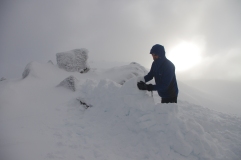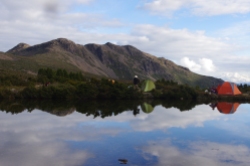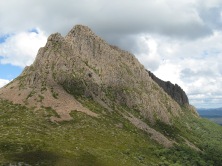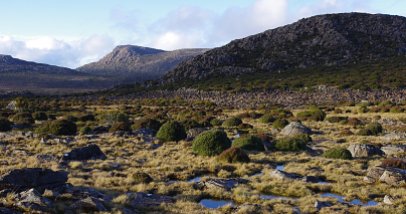 While on a recent walk in Mt Field national park in Tasmania, I was struck by the amount of track work that had been done in the four years since I was last there. Much of this is in the fragile areas from Negate Pass through to K Col.
While on a recent walk in Mt Field national park in Tasmania, I was struck by the amount of track work that had been done in the four years since I was last there. Much of this is in the fragile areas from Negate Pass through to K Col.
I was reminded of the fact that track work can be incredibly aesthetic. In Tasmania there have been various stages in creating and stabilising tracks, with less use nowdays of locally cut timber, in favour of treated pine and lots of boardwalks. This is never very nice looking in it’s own right, and often needs helicopter lifts to get to remote areas, and hence has a higher environmental impact than locally cut wood. But the stone work in many places, including Mt Field, is fantastic. Thanks to the Parks Service workers, contractors and volunteers who have put in so much effort for so long to stabilise the track network in the mountains.
Although I have walked in remote areas since I was a teenager, I sometimes found track works an intrusion on my enjoyment of wild landscapes. Of course, I eventually realised that in popular – and especially alpine areas – they are a necessary part of reducing impact, by channeling what otherwise may be a myriad of smaller braided trails into a single pathway.
Then the poet Gary Snyder introduced me to the idea of track construction, of laying stones and other trail stabilisation as meaningful work, a way for us to interact with the wild. His poem Riprap and other works constantly remind me of that. Track building is a subtle, low impact way to engage mindfully with landscape.
Lay down these words
Before your mind like rocks.
placed solid, by hands
In choice of place, set
Before the body of the mind
in space and time:
Solidity of bark, leaf, or wall
riprap of things:
Cobble of milky way,
straying planets,
These poems, people,
lost ponies with
Dragging saddles—
and rocky sure-foot trails.
The worlds like an endless
four-dimensional
Game of Go.
ants and pebbles
In the thin loam, each rock a word
a creek-washed stone
Granite: ingrained
with torment of fire and weight
Crystal and sediment linked hot
all change, in thoughts,
As well as things.
 As we walked out from a fantastic trip, I was reminded that helping out on working bees to stabilise tracks is a great way of giving back to the places we love. If you live in Tasmania, you may want to get involved with Friends of Mt Field, a volunteer group that does much of the track work there. But where ever you are there will be a group doing this type of vital work. You will find some contacts here.
As we walked out from a fantastic trip, I was reminded that helping out on working bees to stabilise tracks is a great way of giving back to the places we love. If you live in Tasmania, you may want to get involved with Friends of Mt Field, a volunteer group that does much of the track work there. But where ever you are there will be a group doing this type of vital work. You will find some contacts here.
Check the Friends of Mt Field site here.
































































Recent Comments